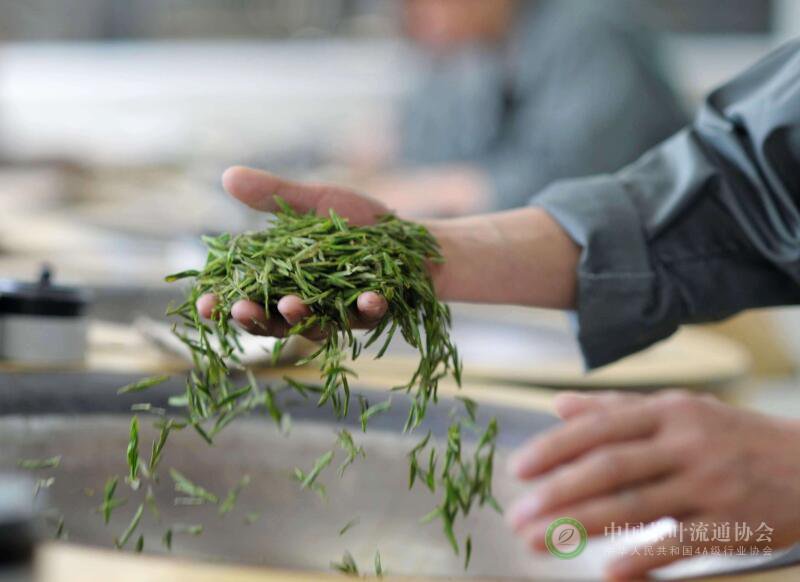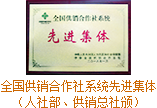China National Tea Museum in Hangzhou looked unpretentious. A young man and young woman sat together on a bench looking out at a tea plantation. It was the first time that we visited a tea plantation in China. We stepped into the museum and found we were in an authentic teahouse. The museum displays the history of tea and results of tea studies and it receives more than one million visitors a year. We wandered through the exhibition halls, reviewing exhibits. What are on display in showcases are just a small part of the 1,300 tea species known to mankind. However, all these tea species share a common ancestor: , a species of evergreen shrub or small tree whose leaves and leaf buds are used to produce tea.
The home of tea is in the southwest of China. Tea as a beverage began its eastward journey thousands of years ago. It then spread all over China. It traveled further to Japan, Korea and India before it reached the length and breadth of the world. The original tea making differed from the way we know very well today. The ancient beverage, in all probabilities, may not appeal to modern tea drinkers. In the ancient procedure, tealeaves must be pulverized and boiled in water. It must be seasoned with salt before it was served.

A Chinese legend has it that Shen Nong first discovered tea. The patron of agriculture instructed that tea must be boiled before it could be drunk. One day, he was boiling water by a shrub. It happened that some leaves fell from the shrub into the boiling water in the water jar. Shen Nong sipped the water and found it tasteful. The myth offers an accurate time to indicate when this happened: it happened in 2737 BC.
In fact, ancient Chinese knew about tea for many centuries in the pre-Christ era. As early as the Western Zhou (1,100-771BC), tea was part of the offering at the royal sacrificial ceremony in honor of deities. Tealeaves were also used as herbal medicine and vegetable. In the Han Dynasty (206BC-220AD), steeped tea was generally used as a medicine.
As testified by historical records, it was not until the Tang Dynasty (618-907) that tea became a popular beverage. The centuries witnessed the great prosperity of the Tang era featuring political stability and economic growth. At first, only privileged nobles could afford tea. Then the fashion spread downwards. Eventually, it was one of the seven necessities of well-maintained everyday life. At that time, tea was steamed and pressed into bulks in the shape of a brick or a small millstone. Brick tea can be purchased as a tourist souvenir. It can be easily transported to Tibet. A tea brick must be ground before tea is made.
Wu Xiaoli, curator of China National Tea Museum, gave us a brief introduction to the genesis of . Lu Yu (733-804) wrote a book exclusively dedicated to everything he knew about tea. The book covers information on planting tea trees, processing, and tea drinking. The special book is also known as . In the Song (960-1279), pulverized tea was a popular beverage. It was easy to make tea out of pulverized tealeaves. A bamboo stick was used to whisk pulverized tea until it frothed. At that time, tea was also one of the most important commodities China exported to overseas markets. In 1191, a Japanese monk named Saichou finished his studies in China. The tea seeds he brought back to Japan made tea farming real in the island country.

There was a dark age for tea. It was marginalized when the Yuan dynasty ruled China from 1271 to 1368. Tea came back to the everyday life of Chinese in the Ming Dynasty (1368-1644). There emerged a new tea product: broken tea. In 1391, an imperial decree stipulated that only broken tea could be tea tributes to the royal house.
Today, there is a great variety of tea products: green tea, black tea, oolong (green and yellow), red tea, white tea and white tea. Interesting enough, there was only green tea in ancient China. In the 17th century, tea farmers in southern China began to produce black tea and oolong tea, which underwent microbial fermentation before they were ready for international trade. Unlike unfermented tea, these tea products would not deteriorate on their long journey across the world to overseas consumers.
(The article was written in cooperation with the Chinese newspaper Guangming Daily and the Czech monthly Literární Noviny. The Chinese version has been printed in Chinese tea, a magazine.)
联合国大会近期宣布每年5月21日为“国际茶日”,以赞美茶叶的经济、社会和文化价值。“茶之为饮,发乎神农氏”。中国是茶的故乡,更是茶文化的发源地,茶对于中国人来说是有特殊意义的。捷克文学报2019年第12期以中国茶为专题做了一组报道,其中有去年到访过浙江的记者雅娜·帕夫洛娃的文章,我们来看看她怎么说茶。
坐落在杭州的中国国家茶叶博物馆外观朴实无华,一对年轻人坐在长椅上眼望茶园。在中国我们首次有机会参观茶园。走入建筑内部,您会发现自己身处地道的中国茶馆里。这里展示了茶的历史以及当今对茶的研究,前来参观的游客每年过一百万。我们漫步展厅,展示柜里陈列着目前已知的1300种茶中的一部分。然而,它们的共同祖先只有一个——中国茶树,山茶。

茶的故乡在中国西南地区。几千年前,绿茶从这里走向中国各地,然后到日本、韩国,到印度,再传播到世界各地。最初的制备方法与我们今天所熟悉的方法大不相同,而且这种饮料甚至很有可能不符合现代消费者的口味。方法是:将茶叶捣碎,水煮,加盐。
传说神农氏发现了茶。他非常智慧,宣称饮用水都必须在喝前煮沸。某一天他坐在灌木丛旁煮水,有几片叶子恰好掉入沸腾的水罐中,神农喝过,感觉味道很好。这则神话非常准确,据说茶在公元前2737年出现。
事实是,古代中国人在公元前好几个世纪就知道茶了。早在西周时期,茶就作为祭神贡品。茶叶还被当做蔬菜,当作草药用于医药。到了汉朝,人们普遍饮用煮过的茶汤来治病。
根据史料记载,饮茶习惯直到唐代才普及,当时中国经历了“大唐盛世”,政治稳定,经济发展。当然,起初这是贵族的特权,后来逐渐普及到更广泛的社会阶层。最后到普通百姓家中,成为良好的日常生活的七大必需品之一。当时,蒸过的茶叶被压成块状,类似于小磨盘或砖块。如今,砖茶可以作为纪念品买到。饮用时必须先将其压碎,然后再冲泡。

中国茶叶博物馆馆长吴晓力向我们介绍说:“公元8世纪前后,陆羽撰写了一部专著,描述了从茶树种植到加工制作和饮用方法的完整过程,后世称之为《茶经》。到了宋代时,碎片状的茶已经广为人知,制备简单省力,使用竹签搅拌。”茶在当时也成为最重要的出口商品之一。1191年在中国留学的日本和尚最澄归国时,将茶种带回了日本,促成了茶在日本的传播。
茶也经历过黑暗时期。在蒙古人统治的元朝被边缘化。吴晓力接着讲到:“明代(1368~1644年)之后,茶又回归到百姓生活中,而且推出了新的加工种类——碎片茶。1391年皇帝甚至下诏,规定上供给宫廷的茶必须是碎片状的。”
如今茶种类分为:绿、黑、乌龙、红、白和黄茶。有趣的是,在古代中国只有绿茶一种。17世纪,在中国南方开始发酵加工红茶和乌龙茶,用于外贸,而且它们不同于未经发酵的茶,在出口所需的长途运输中不会变质。
(原文为捷克语,由北京外国语大学副教授徐伟珠翻译。)
(责任编辑:信息宣传部)




